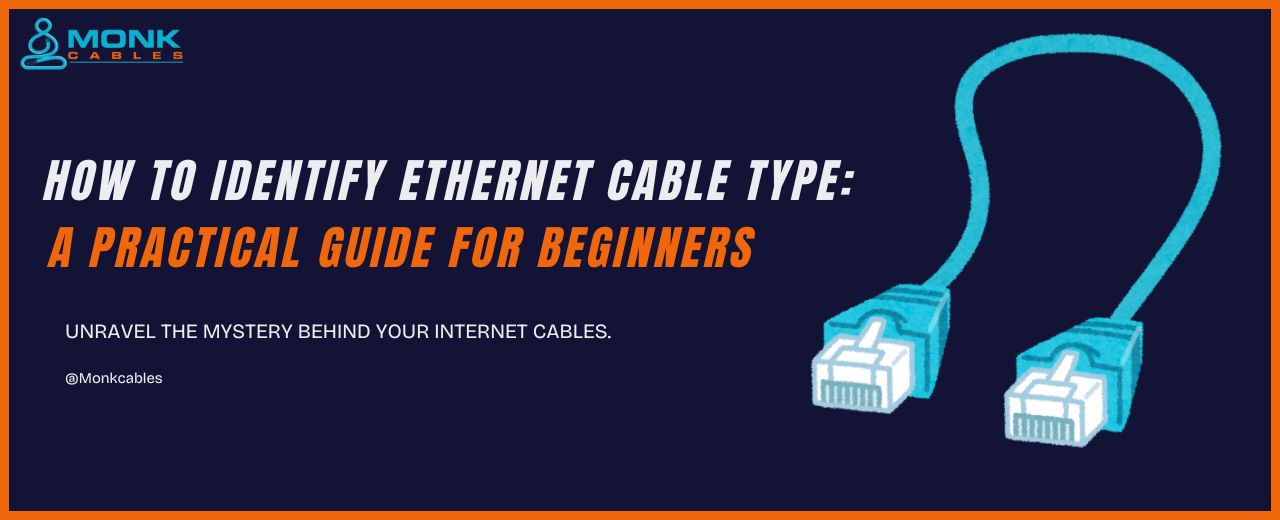
If you’ve ever found yourself staring at a tangle of cables behind your desk and wondering why your lightning-fast internet plan still feels more like a dial-up memory, the answer might be closer than you think, literally right at your feet.
Ethernet cables are the unsung heroes of our wired lives. But not all Ethernet cables are created equal. Some are built for basic browsing, others for blazing-fast gigabit speeds. Understanding what kind of cable you have can be the difference between smooth 4K streaming and never-ending buffering.
If you’re a gamer, a remote worker, or just someone who values a stable connection, knowing your Ethernet cable type is a small but powerful step toward a better digital experience.
Ethernet cables come in categories, commonly shortened to “Cat” like Cat5, Cat5e, Cat6, and beyond. These categories aren’t just arbitrary labels; they define the cable’s capabilities in terms of speed, shielding, and bandwidth.
Cat5 cables, for instance, top out at 100 Mbps and are largely outdated. Cat5e (“e” stands for “enhanced”) offers up to 1 Gbps speeds and is still widely used.
Cat6 and Cat6a are the go-to for future-proofing, handling 10 Gbps under the right conditions. Cat7 and Cat8 push even further but are often overkill for typical home setups.
If your internet plan supports gigabit speeds but you’re using a cable that can’t, your cable is the bottleneck.
Here is a quick comparison table:
| Category | Max Speed | Shielding | Best Use Case |
| Cat5 | 100 Mbps | None | Outdated, basic browsing only |
| Cat5e | 1 Gbps | Typically none | General use, streaming, light gaming |
| Cat6 | 10 Gbps (up to 55m) | Some (Optional) | Gaming, remote work, 4K streaming |
| Cat6a | 10 Gbps | Better Shielding | Future-proofing, heavy data, office use |
| Cat7/8 | 10-40 Gbps | Fully Shielded | Enterprise, data centers, niche scenarios |
The easiest way to figure out your Ethernet cable type is to read the printed text on the outer jacket. You might see something like “Cat5e UTP 24AWG 350MHz.”
Here’s how to break that down:
“Cat5e” tells you the category; “UTP” means it’s unshielded twisted pair (a common format); “24AWG” is the wire gauge, and “350MHz” refers to its bandwidth capability.
If the print is faded or missing, try looking along the full length of the cable, as manufacturers often repeat the text every foot or so. This simple inspection gives you a lot of information without needing to open anything up.


Not all clues are written. Sometimes, how the cable feels can be just as telling. Older Cat5 cables tend to be thinner and more flexible. Cat6 cables are thicker and slightly stiffer due to additional insulation and sometimes shielding. Cat6a and Cat7 cables might even feel bulky, especially if they’re shielded.
Shielding is often indicated by foil or braided metal around the twisted pairs, which can improve performance in noisy environments. You might also notice that the plugs on higher-grade cables look more solid and secure. If your cable feels fragile or ultra-thin, it’s probably not rated for high-performance tasks.
If the markings are missing and you can’t tell by touch alone, you can still do a few things to estimate the cable’s type.
One trick is to plug it into a gigabit-capable switch or router and check if the LED indicator lights up for a 1 Gbps connection. Most modern routers have colored LEDs or web interfaces that show connection speeds.
Another trick: strip back a small section (if you’re okay sacrificing the cable) and check the wire layout. Cat5e and up usually use all four twisted pairs. Avoid damaging the cable unless you’re replacing it anyway, but even a basic test like noticing connection speed on your PC can be telling.
Different tasks have different networking needs. If you’re streaming Netflix in HD or browsing the web, Cat5e might be fine. But if you game online, work remotely with large file transfers, or use smart devices throughout your home, you’ll want something more robust, like Cat6 or Cat6a Ethernet cable.
For Power over Ethernet (PoE) setups like security cameras, go for at least Cat5e with 100% copper to ensure safe power delivery. Think of cable choice like choosing tires for your car: it’s not just about getting from point A to B; it’s about doing it safely and efficiently.
Unfortunately, not all cables are honest about their capabilities. Cheap cables might advertise as Cat6 but skimp on copper, using copper-clad aluminum (CCA) instead. These perform poorly over long distances and are prone to breakage.
Watch out for cables that feel suspiciously light, have blurry or missing labeling, or come from unknown brands. The connectors might be loose-fitting or made of brittle plastic. If your internet cuts out randomly or drops speed inconsistently, a bad cable could be the culprit.
Ethernet cables aren’t immortal. If yours is visibly cracked, fraying, or has bent too many times to count, it’s time for a replacement. Cables older than 10 years are likely Cat5 or early Cat5e and might not meet today’s standards.
Also, if your speed test results consistently underperform your internet plan, and you’ve ruled out other issues, the cable might be the bottleneck. Replacing it with a quality Cat6 or Cat6a cable is a quick and affordable fix.
Identifying your Ethernet cable type isn’t rocket science, but it can make a world of difference in your home network’s performance. Whether you’re gaming, streaming, or just working from your home office, having the right cable ensures you’re getting the speed and stability you pay for. Now that you know what to look for, whether it’s the label, the feel of the cable, or the connection speeds, you’re better equipped to troubleshoot or upgrade your setup. So go ahead, take a closer look at that cable. It might just be the easiest fix to your biggest connectivity headache.